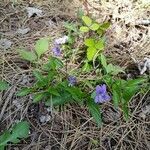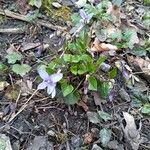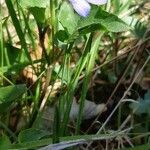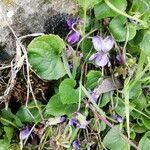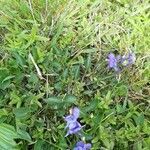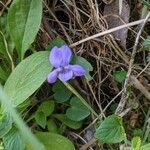Plants perennial, caulescent, not stoloniferous, 2–40 cm. Stems 1–5, ascending to erect, glabrous, on caudex from subligneous rhizome. Leaves cauline; stipules linear to lanceolate, margins ± lacerate to subentire, points often gland-tipped, apex acute; petiole 0.3–2.5 cm, glabrous; blade ovate to narrowly ovate, 1.2–5.2 × 1–2.7 cm, base cordate or deeply cordate to truncate, margins crenate, eciliate, apex acute to obtuse, abaxial surface glabrous or sparsely pubescent on veins, adaxial surface glabrous or sparsely pubescent. Peduncles 1–10 cm, glabrous or sparsely puberulent. Flowers: sepals lanceolate, margins eciliate, auricles 2–3 mm; petals usually blue-to gray-violet on both surfaces, rarely white, white basally, lower 3 dark violet-veined, lateral 2 bearded, lowest 15–25 mm, spur light yellow to light green or white, gibbous to usually elongated, 3–5 mm; style head beardless; cleistogamous flowers axillary. Capsules ovoid, 7.5–9 mm, glabrous. Seeds light to dark brown; 1.7–2.1 mm. 2n = 40.
More
A small plant. It grows 10-30 cm high and spreads 30-50 cm wide. It keeps growing from year to year. It is low and spreading. The leaves are dark green and have shallow teeth. The leaves are oval and pointed or heart shaped. They are 25 mm long. The flowers are mauve, purple or white. They are 18 mm wide. They have a pale yellow spur.
Can be grown by divisions or seedlings. Seeds needs stratification.
